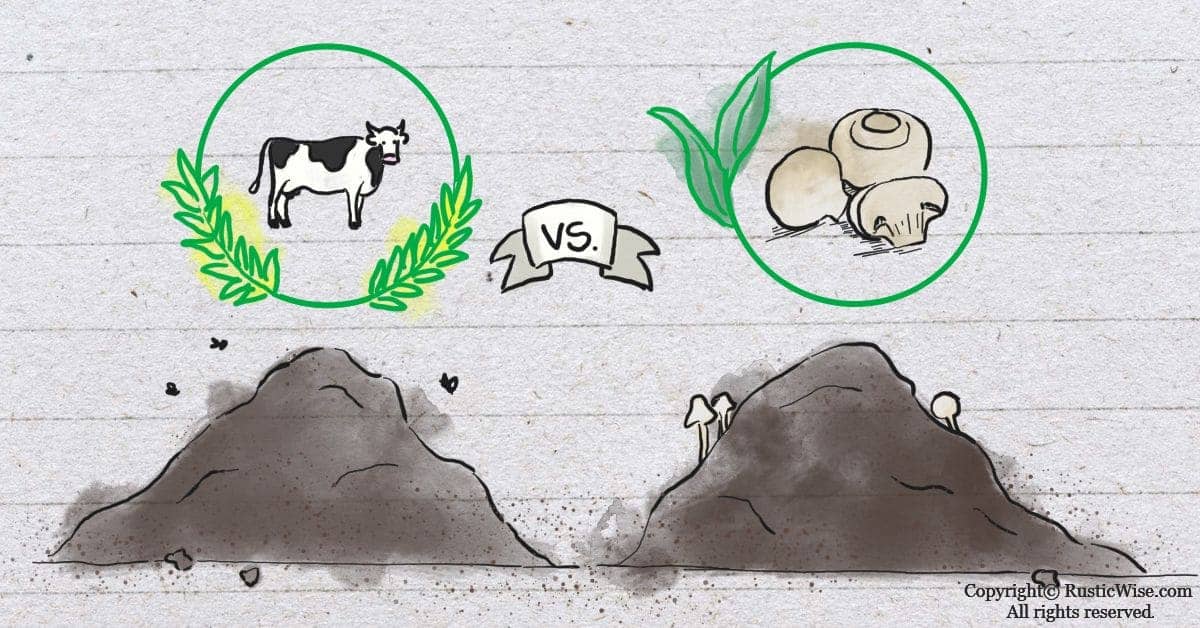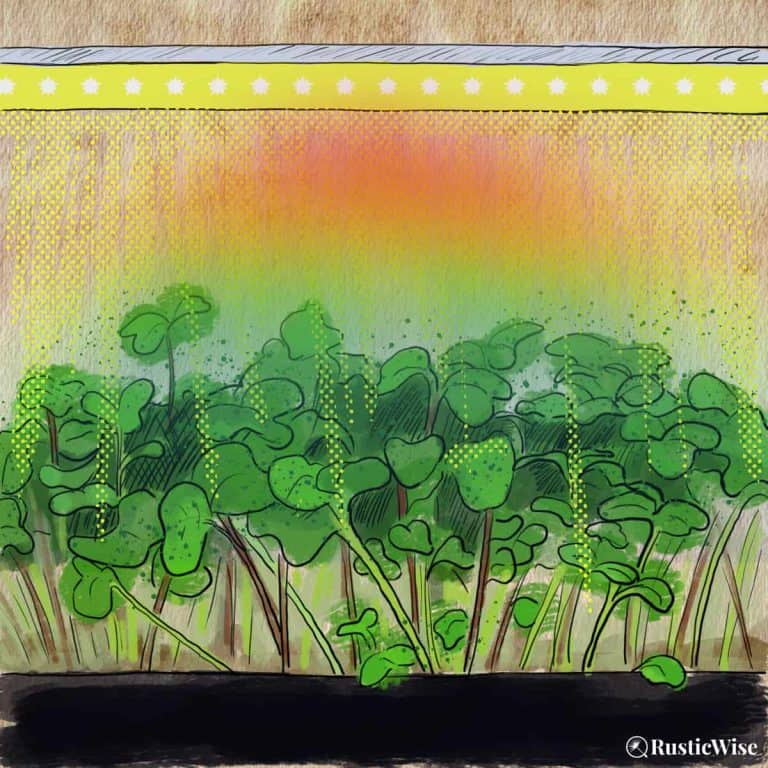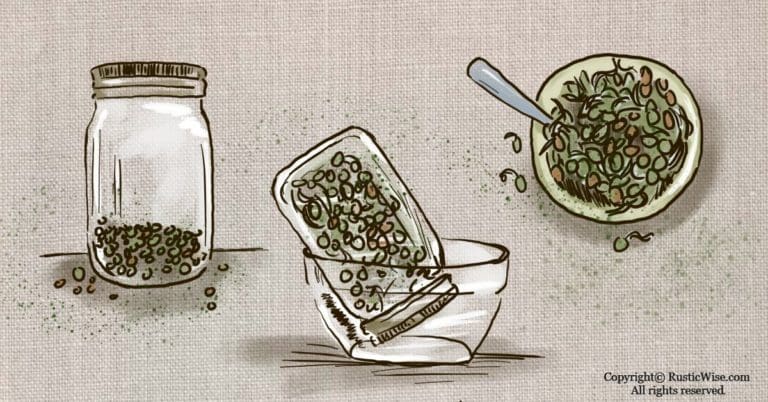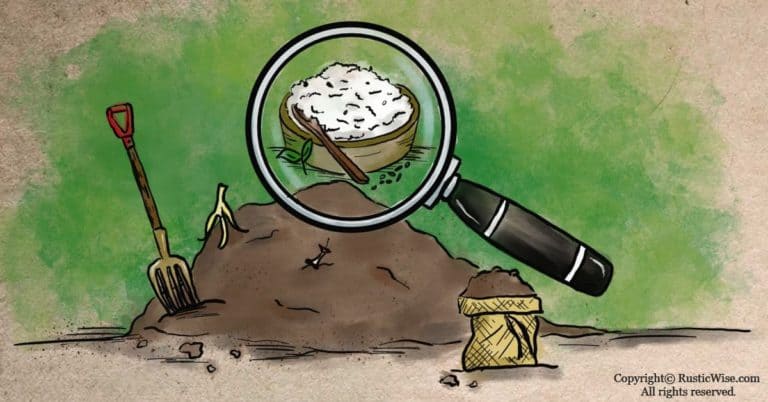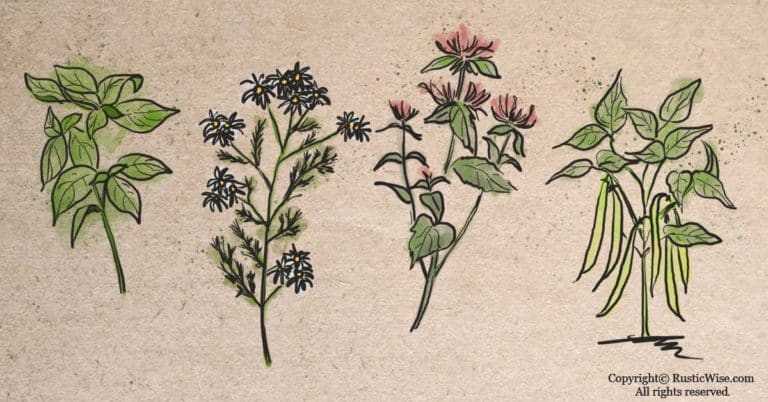The Dirt on Cow Manure vs. Mushroom Compost
Do you want to grow a beautiful garden, but don’t know what’s best for the soil? Cow manure and mushroom compost are two popular options for those who are looking to improve their soil quality. We’ll discuss the pros and cons of both cow manure vs. mushroom compost so you can make an informed decision when deciding which to use in your garden. Both options add nutrients and helpful microorganisms to soil, while also improving texture and water-retention.
Healthy soil is an integral part of having a successful garden. However, soil can be lacking in many areas and may need a boost from a soil amendment. Luckily both cow manure and mushroom compost are great for improving long term soil health. Read on to learn more about cow manure vs. mushroom compost and how to use it in your garden.
Why use manure or mushroom compost?
In an ideal world, the soil in our garden would be the perfect texture (not too sandy, not too silty) and teeming with the right balance of nutrients and microorganisms needed to sustain life. We would be able to plant a seed, water it, and watch the tiny seedlings unfurl its leaves. Easy-peasy, right?
Unfortunately, most garden soil is lacking in something. Which is why we turn to soil amendments such as cow manure or mushroom compost to improve garden soil.
Over time as soil is used to support life (the plants and vegetables we grow), it becomes depleted of necessary nutrients and microorganisms. Every so often, it’s important to re-introduce healthy organic matter to soil through manure or compost.
Manure and compost improve soil by adding helpful microbes that break down nutrients into more accessible forms for plants to access.
Luckily, there’s no shortage of manure and compost!
Tip: It’s a good idea to do a soil test to know your soil’s nutrient and organic matter content to optimize soil health before applying any type of fertilizer.
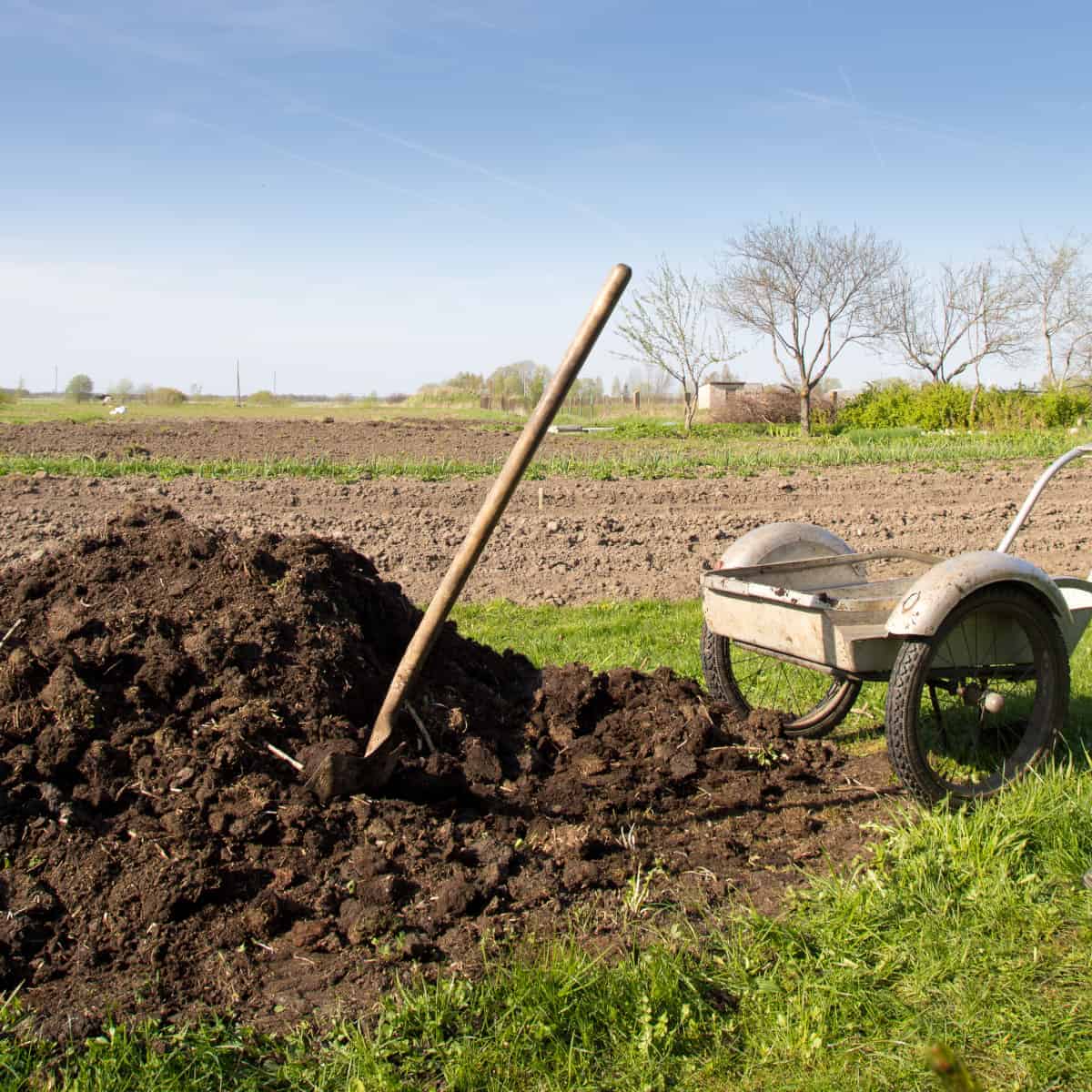
Pros and cons of cow manure vs. mushroom compost
Here’s a quick look at the pros and cons of these two types of organic fertilizer.
Table: Cow Manure vs. Mushroom Compost at a Glance
| Cow Manure | Mushroom Compost | |
|---|---|---|
| Notes | Don’t apply fresh manure directly to plants—must allow it to decompose or “mature” first. | Mushroom compost is typically mixed with vermiculite or perlite before using in the garden. Mushroom compost may need to be “matured” for a period to allow for salts to neutralize, particularly around plants sensitive to salts. |
| Pros | – Improves soil moisture-retention and drainage – Richer source of organic nutrients – Prevents nutrient loss in plants | – Improves soil moisture-retention and drainage – Rich source of organic nutrients – Easy to use and apply |
| Cons | – Can’t apply fresh manure—may harm plants – May contain weed seeds and salts – May contain leftover medicines and other synthetic chemicals from treated animals – May contain harmful pathogens – May contain herbicides | – High salt content may harm salt-sensitive plants – May contain fungicide residue |
Cow Manure
Notes: Don’t apply fresh manure directly to plants—must allow it to decompose or “mature” first.
Pros of cow manure
- Improves soil moisture-retention and drainage: As a soil amendment, manure is great at improving the structure of soil, making it more hospitable for growing plants.
- Richer source of organic nutrients: Cow manure is a source of many nutrients such as nitrogen, phosphorus, and potassium. In fact, most cow manures may contain slightly more of these three nutrients than mushroom manure.
- Prevents nutrient loss in plants: Nutrient leaching occurs when vital nutrients are washed away and pushed down in soil where roots can no longer get to them. Cow manure is great at preventing loss of vital nutrients.
Cons of cow manure
- Can’t apply fresh manure—may harm plants: Fresh manure is very high in nitrogen—so high that when applied fresh, it may “burn” the plants. You may get oversized leaves with no flowers or fruits. Plants may become dehydrated.
- May contain weed seeds and salts: As weeds are commonly found in fields, the seeds are passed through the cow’s digestive system and remain in the manure. Same goes for salts.
- May contain leftover medicines and other synthetic chemicals from treated animals: Cows are often on the receiving end of various injections to promote growth and maintain health. These may linger in the body and passed through to the manure.
- May contain harmful pathogens: A few pathogens such as E. coli, Salmonella, Campylobacter bacteria, and Giardia or Cryptosporidium protozoa may remain in manure.¹ Although very rare, parasites such as tapeworms are sometimes found in cow manure. These parasites spread to plant tissue if cow manure isn’t fully composted before using. Special care needs to be taken if using manure around edible foods.
- May contain herbicides: Many farmers use herbicides to control crops, fields, and hay. Certain herbicides may remain in cow manure. Many vegetable gardens have been ruined due to gardeners unwittingly applying manure containing herbicide residues. While these herbicides eventually break down, some types are resilient and stick around for years. The result is “Frankenstein” plants with twisted and enlarged leaves; poor seed germination; and seedlings that die off.
Tip: Ensure that your manure is organic and herbicide-free. Have a chat with the supplier of your manure to ensure they haven’t used harmful herbicides.
Mushroom Compost
Notes: Mushroom compost is typically mixed with vermiculite or perlite before using in the garden. Mushroom compost may need to be “matured” for a period to allow for salts to neutralize, particularly around plants sensitive to salts.
Pros of mushroom compost
- Improves soil moisture-retention and drainage: As a soil amendment, mushroom compost is great at improving the structure of soil, making it more hospitable to growing plants.
- Rich source of organic nutrients: Mushroom compost is a source of many nutrients such as nitrogen, phosphorus, and potassium. It should be noted that typically mushroom compost contains slightly less of all three nutrients than most cow manures.
- Easy to use and apply: While cow manure is heavier, mushroom compost is lighter and easier to spread. While some plants may be more sensitive to the salt content in fresh mushroom compost, there’s less chance of spreading pathogens when using this compared to using fresh cow manure.
Cons of mushroom compost
- High salt content: When mushroom compost is used undiluted and/or fresh, it contains very high levels of salt. This may harm young seedlings or plants intolerant to salt such as azaleas, blueberries, and rhododendrons. Most people combine mushroom compost with vermiculite and/or perlite before using in the garden, or allow it to mature first.
- May contain fungicide residue: Many mushroom growers use fungicides which may be present in mushroom compost. If you can get your hands on some organic mushrooms, that would be ideal. However, most harmful pathogens are fungicide residues are killed during pasteurization as we explain in more detail below.
Nutrient breakdown
If you’re new to gardening, you may be wondering what N-P-K stands for. You’ll see this label on most bags of fertilizer. The numbers stand for the percentage of available Nitrogen, Phosphorus, Potassium, the three important nutrients vital to plant growth.²
The most important nutrient is nitrogen which supports healthy plant growth. Nitrogen plays a key role in the development of protein, and protein is used to form cell tissues in living things.
Next is phosphorous, an important nutrient needed for healthy photosynthesis. This ensures the plants are able to store and use energy efficiently for optimal growth.
Finally, we have potassium which acts as a protective agent by boosting a plant’s ability to ward off diseases. Potassium also helps with overall healthy growth.
Table: NPK of Composted Cow Manure vs. Mushroom Compost
| Nitrogen | Phosphorus | Potassium | |
|---|---|---|---|
| Composted steer manure | 0.8 | 0.5 | 0.5 |
| Organic mushroom manure | 0.7 | 0.3 | 0.3 |
A closer look at cow manure
What goes in, must come out, right? This is exactly what cow manure is: a natural animal by-product. In the case of cows, it’s a plant-based diet thoroughly processed by their digestive system (remember that cows have four stomachs?). This helps them break down cellulose into a rich and moist…cow patty.
Sure, you’ll need to pinch your nose when you’re around fresh manure, but you’re not typically supposed to use cow manure when it’s fresh anyhow—it may burn your plants and possibly transmit pathogens such as E. coli, or spread weed seeds.
Instead, once you receive a shipment of cow manure, you should let it “mature.” If you’re buying a bag of manure from the store, sometimes the label says its “rotted” manure, which means it has been stored for a period of time. This type of cow manure should not stink anymore—it should have a rich, crumbly dark color and smell like soil.
Cow manure is just one type of animal manure available. Other types of manure include horse, pig, sheep or llama, and rabbit. However due to the largely grass-fed diet of cows combined with their strong digestive systems, cow manure is an ideal soil amendment.
Note: Aged manure is not the same as fully composted manure. Aged manure may still contain harmful pathogens that can transfer to plants. According to the University of New Hampshire, a compost pile must reach temperatures between 131 and 140 degrees Fahrenheit (55–60 degrees Celsius) for a period of several weeks to ensure all harmful pathogens have been killed.¹ To reach these temperatures, it must be turned frequently and monitored. This is often difficult to do for the average backyard compost.
How to use cow manure in the garden
The best way to safely use cow manure in the garden is to add it to your backyard compost pile first (preferably a hot compost), and let it fully decompose to kill any pathogens and weed seeds.
While you may need to wait awhile for it to decompose, your patience will be rewarded with a nutrient-rich soil amendment. The good news is that cow manure breaks down quickly.
To speed up the composting process, ensure you turn your compost pile regularly to aerate it, and keep it moist. Since cow manure is high in nitrogen, it’s a good idea to balance it out with a carbon-rich compost ingredient such as dry leaves when adding to compost.
Although we’ve mentioned the hazards of using fresh manure in the garden, there are ways to do it safely:
- Spread it out in the fall, and work it into the soil towards the end of winter just before planting. By the time you’re ready to plant, the cow manure should have no strong odor.
- To minimize any potential risk of spreading harmful pathogens to your edible garden, wait at least 120 days after using aged or raw manure before harvesting food near the soil. This applies to leafy greens, strawberries, and root crops such as carrots. For other crops, wait at least 90 days.
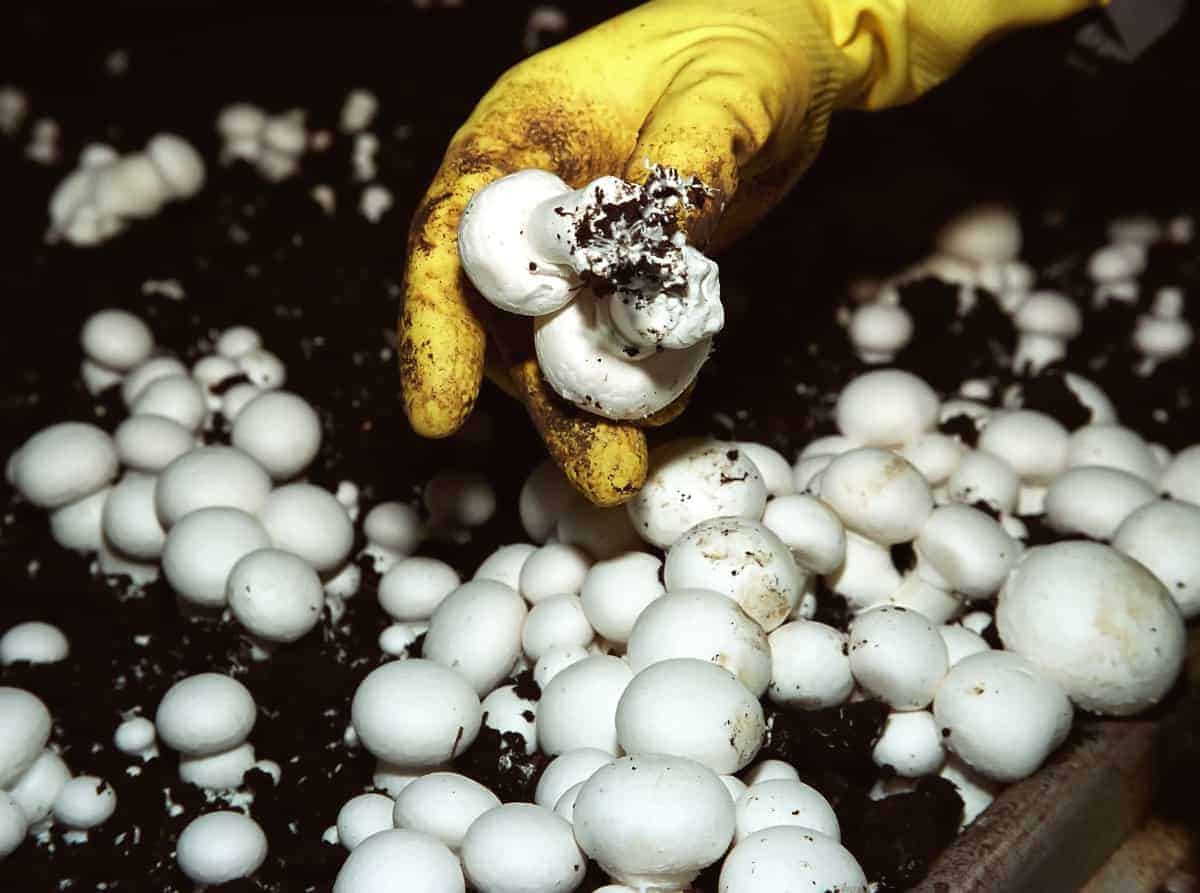
Credit: Yay Images
A closer look at mushroom compost
Sometimes called mushroom manure, or spent mushroom substrate (SMS), mushroom compost is actually not comprised of mushrooms at all. It’s made of the soil-like substance left over after mushroom farmers have harvested mushrooms.
While each mushroom compost may vary slightly, mushroom compost is generally a mixture of straw, hay, used horse bedding, horse and/or chicken manure, peat moss, and residual cocoa shells, corn cobs, and cottonseed hulls.
Pasa Sustainable Agriculture points out that a common misconception many people have of mushroom compost is that it’s comprised mainly of manure.⁴ This is incorrect. They point out that the bulk of the average mushroom compost recipe is:
- Hay: 40-50%
- Straw: 25-35%
- Straw horse bedding: 5–15%
- Poultry manure: 4%
- Gypsum: 2%
- Corn cobs, cocoa shells, cotton seed hulls: 1%
The hay, straw, and used horse bedding provide a rice source of carbon, while the small amount of manure adds a dose of nitrogen.
The making of mushroom compost is a lengthy, multi-step process that can take months from start to finish.⁵ In a nutshell, it goes something like this:
- Mushroom substrate is made by combining a variety of ingredients including hay, straw, manure, etc. A bit of water is added to kickstart the composting process.
- This compost pile is carefully managed and turned frequently.
- The mushroom substrate sits and further “cures.”
- The cured compost is then pasteurized to kill any harmful pathogens.
- The compost is inoculated with mushroom spawn. The mushrooms grow, and are harvested.
- This leftover spent mushroom substrate is then shipped off to be used by gardeners and landscapers.
How to use mushroom compost in the garden
Just like cow manure, fresh mushroom compost may harm certain plants and young seedlings due to its high salt content. Allow your mushroom substrate to sit for 6 months or so.
The best time to stock up on mushroom compost is in the fall or winter to allow it to cure for half the year so it’s ready to use come springtime.⁶
Mix mushroom compost with potting soil before using in containers.
There are many applications for mushroom compost in your garden.
- Spread onto freshly seeded grass lawns. This prevents birds from eating the seeds and helps with water-retention.
- Use as mulch in spring and summer around shrubs, trees, and perennials.
- Enhance soil structure in gardens by adding around 3 inches of mushroom compost. Incorporate into the top 6 inches of garden soil
- Add to container plants, butno more than one-quarter should be used in ratio to the potting soil.
- Top-dress field or row crops.
Tip: Remember to avoid using fresh mushroom compost around members of the heath family such as azaleas, blueberries, camellias, and rhododendrons.
The final word: cow manure vs. mushroom compost
The verdict is in—cow manure vs. mushroom compost both have their pros and cons, but can be used to make your soil more fertile! So, which is better for your garden? The answer may be a little bit different depending on what type of soil or plants you have. If you have a lot of acid-loving plants like blueberries, azaleas, and rhododendrons, cow manure may be better. If the idea of having to compost cow manure turns you off, then perhaps mushroom compost may be more your speed.
Whichever you choose, both are solid choices! However, the best way to control what goes into a natural soil amendment is to start your own compost pile.
Check out our articles about helpful tips for starting your own compost pile and the differences between compost and mulch.
Related Questions
Can you add pet poo to compost?
No, it’s not recommended to add dog or cat feces to your compost pile as they may contain parasites and other harmful pathogens that can harm people. So, why is it okay to use cow manure in compost? It largely has to do with a cow’s plant-based diet vs. the average diet of a pet which eats meat.
Should I be worried about pesticides in mushroom compost?
Some mushroom growers use pesticides to control fungus gnats. However, mushroom compost is pasteurized at high temperatures to safely kill any harmful pathogens, weed seeds, and diseases.
According to Pennsylvania State University, you needn’t worry about any lingering pesticides in your compost because, “Organic matter in the substrate effectively binds pesticides. Also, these compounds decompose rapidly at the high temperatures used for pasteurizing the completed crop. It is safe to assume that the pesticide residue on spent substrate is low.”
👉 If you like this post, see our complete Composting Collection.
Would you like more timeless tips via email?
Fun tips to help you live an independent, self-sustaining lifestyle. Opt-out at any time.


References
- University of New Hampshire Cooperative Extension, Guidelines for Using Animal Manures and Manure-Based Composts in the Garden [fact sheet], https://extension.unh.edu/resource/guidelines-using-animal-manures-and-manure-based-composts-garden-fact-sheet. Accessed June 2021.
- The Fertilizer Institute, Fertilizer 101: The Big 3 – Nitrogen, Phosphorus and Potassium, https://www.tfi.org/the-feed/fertilizer-101-big-3-nitrogen-phosphorus-and-potassium. Accessed June 2021.
- Macdonald, Mark (24 January 2021), “The Poop on Manure“, West Coast Seeds. Accessed June 2021.
- Pasa Sustainable Agriculture, Mushroom Compost Q&A, https://pasafarming.org/mushroom-compost-qa/. Accessed June 2021.
- The Pennsylvania State University, Spent Mushroom Substrate as a Soil Amendment in Turf, https://extension.psu.edu/spent-mushroom-substrate-as-a-soil-amendment-in-turf. Accessed December 2023.
- Beyer, David Meigs (03 May 20). “Spent Mushroom Substrate“, The Pennsylvania State University. Accessed June 2021.

Author: Josh Tesolin
Josh is co-founder of RusticWise. When he’s not tinkering in the garden, or fixing something around the house, you can find him working on a vast array of random side projects.

